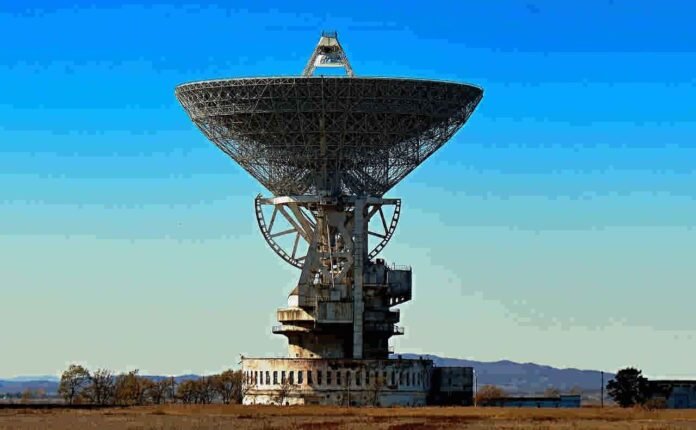Sattelitter, have you ever looked up at the night sky and wondered what’s out there beyond the stars? Among the twinkling lights and constellations, there are machines—quiet, invisible, yet incredibly powerful—circling the Earth every moment of every day. These machines are called Sattelitter, and they’re doing much more than just floating around in space.
From helping us navigate unfamiliar roads to broadcasting our favorite Netflix shows, satellites are deeply woven into our daily lives. But despite their importance, many people don’t really understand how they work, where they came from, or what their future holds.
This guide is here to change that.
We’re going to take you on a journey from the basics of Sattelitter technology to the exciting innovations shaping tomorrow’s space frontier. Whether you’re a curious beginner or just want to impress your friends with some space facts, you’re in the right place.
What Are Sattelitter, Really?
Breaking Down the Basics: From Space to Earth
Let’s start simple. A Sattelitter is any object that orbits another object. That’s it. The Moon, for instance, is a natural satellite of Earth. But when we talk about satellite technology, we’re usually referring to artificial satellites—man-made devices launched into space to orbit Earth or other celestial bodies.
These machines vary widely in size, purpose, and complexity. Some are as small as a shoebox, while others are the size of a bus. Yet, all Sattelitter share one goal: to perform a specific task from their perch high above our planet.
Different Types of Sattelitter and What They Do
There isn’t just one kind of satellite. There are many, and each has a specific role:
- Communication Satellites: These are the reason you can watch international news, make a call from a cruise ship, or stream YouTube on a plane.
- Weather Sattelitter: They help us track storms, monitor climate patterns, and prepare for natural disasters.
- Navigation Satellites: Think GPS—these help us find our way whether we’re driving across town or flying across continents.
- Scientific Sattelitter: Used for space research, climate studies, and more.
- Earth Observation Satellites: These keep a watchful eye on our planet, monitoring everything from deforestation to urban growth.
Natural vs. Artificial Sattelitter: What’s the Difference?
It’s simple. Natural satellites are born from nature—moons, for example. Artificial satellites, on the other hand, are created by humans. They’re designed, built, and launched into orbit to perform specific tasks.
The difference lies in origin and function, but both share the same orbital mechanics.
The Evolution of Sattelitter Technology
A Quick Look at the History of Sattelitter
It all began with Sputnik 1, launched by the Soviet Union in 1957. It was a tiny, beeping metal ball, but it marked the beginning of the space age. That single launch changed everything.
Soon after, the U.S. followed with its own missions. The 1960s and 70s saw rapid developments, with Sattelitter used for military intelligence, TV broadcasting, and scientific experiments.
Key Milestones That Shaped Modern Space Communication
Here are a few big ones:
- 1962: Telstar 1 enabled the first live TV broadcast across the Atlantic.
- 1972: Landsat 1 began a continuous Earth observation program that still runs today.
- 1990s: The Global Positioning System (GPS) became publicly available.
- 2000s: Commercial companies began launching Sattelitter for internet and communication.
- 2020s: Mega-constellations like Starlink changed the game for global internet access.
How Satellite Tech Has Revolutionized Everyday Life
Imagine a day without GPS, satellite TV, or weather updates. It would feel like going back in time. Satellites have made global communication instant, navigation effortless, and disaster response much more effective.
They’re also essential for banking systems, international flights, agriculture, and even farming drones. In other words: satellites = modern life.
How Sattelitter Work: The Science Behind the Magic
The Core Components of a Satellite
Satellites may look like complicated space machines, but they’re essentially built around a few main components:
- Power System: Usually solar panels that convert sunlight into electricity.
- Payload: This is the part that does the job—like cameras, antennas, or sensors.
- Control System: Keeps the Sattelitter pointed in the right direction.
- Propulsion System: Small engines that help it move or adjust position (especially in high-orbit satellites).
- Thermal System: Protects the satellite from extreme temperatures in space.
How Satellites Stay in Orbit Without Falling
Satellites stay in orbit thanks to a perfect balance between gravity and their forward speed. When a satellite is launched into space, it’s given a velocity high enough that instead of falling to Earth, it keeps falling around the Earth—like a continuous free-fall in a circular path.
This delicate dance keeps Sattelitter suspended above us, following a stable path known as an orbit.
Communication Systems: How Data Travels Across the Globe
Satellites receive signals from Earth (called uplink), process the information, and send it back to a different location (called downlink). This happens in milliseconds.
Your satellite TV? It’s being beamed from a ground station to a Sattelitter and back to your dish.
The Role of Ground Stations and Control Centers
Even though satellites are in space, they’re closely monitored from the ground. Ground stations communicate with satellites, track their position, and send instructions. If anything goes wrong—or if the satellite needs a software update—it’s handled from Earth.
Major Uses of Sattelitter in Our Daily Lives
Satellites and GPS: Never Getting Lost Again
Gone are the days of folded paper maps and asking strangers for directions. Thanks to GPS satellites, your phone can pinpoint your exact location within a few meters—anywhere on the planet.
Whether you’re driving, hiking, or just trying to find a coffee shop, satellites have your back.
Weather Forecasting Made Accurate with Sattelitter
Weather satellites monitor cloud patterns, ocean temperatures, and atmospheric changes. This helps meteorologists predict storms, hurricanes, and other weather events with surprising accuracy.
Early warnings save lives—and property.
Television, Internet, and Communication from Space
Ever wonder how live news is broadcast from remote war zones or disaster areas? Satellites. They make it possible to transmit signals across vast distances where land cables simply can’t go.
Satellite internet is also bringing high-speed connectivity to rural and remote areas, bridging the digital divide.
Satellites in Military and Defense Applications
Satellites are crucial for military communication, surveillance, and navigation. They provide real-time intelligence and help guide missiles or track troop movements.
In many ways, space has become the new high ground for defense strategy.
Earth Observation: Watching Our Planet from Above
From tracking wildfires to monitoring glacier melt, Earth observation satellites provide critical data about our changing planet. Scientists use this data for climate research, disaster response, and environmental protection.
Satellite Launches and Orbits Explained
How Satellites Are Launched into Space
Satellites don’t just float into space—they’re launched aboard rockets. Once they reach the desired altitude, they’re deployed into orbit.
Launches are carefully planned and require precision. One miscalculation and the satellite could miss its orbit or fall back to Earth.
Types of Orbits: LEO, MEO, GEO, and Beyond
- LEO (Low Earth Orbit): 180–2,000 km above Earth. Great for imaging and communication.
- MEO (Medium Earth Orbit): 2,000–35,000 km. Used by GPS satellites.
- GEO (Geostationary Orbit): 35,786 km. These satellites appear fixed over one point and are ideal for TV broadcasting and weather observation.
Each orbit serves a different purpose. Choosing the right one depends on the satellite’s job.
Choosing the Right Orbit for the Right Job
For example:
- Want constant coverage of one location? Go GEO.
- Need detailed images? Use LEO.
- Need global navigation coverage? MEO is best.
Space Agencies and Satellite Manufacturers
NASA, ESA, SpaceX, and Others: Who’s Leading the Way
The satellite industry is a mix of old giants and exciting newcomers:
- NASA (USA): Known for deep-space exploration and Earth science.
- ESA (Europe): Focuses on scientific missions and climate observation.
- ISRO (India), CNSA (China), JAXA (Japan): Each with impressive satellite programs.
- SpaceX, Blue Origin, OneWeb: Leading the private sector charge.
Public vs. Private Sector: The New Space Race
Governments once had a monopoly on space. Not anymore.
Private companies now launch, manage, and even own satellite constellations. This shift is making space more accessible—and more competitive—than ever.
Inside the Satellite Manufacturing Process
Making a satellite is like building a supercomputer that has to survive space. Every component tested for radiation, vacuum pressure, temperature swings, and more.
Satellites are built in clean rooms, tested for weeks or months, and cost millions to hundreds of millions of dollars.
Challenges and Risks in Satellite Technology
Space Debris: The Growing Junkyard Above Us
Thousands of defunct satellites and bits of debris now orbit Earth at dangerous speeds. Even a small piece of debris can cause massive damage.
This has led to growing concerns about space traffic and the risk of collisions.
Cybersecurity Threats and Signal Hacking
Satellites can be hacked—yes, it’s happened. Protecting satellite data is now a top priority, especially for defense and communication satellites.
Longevity, Maintenance, and Satellite Failures
Most satellites aren’t designed to last forever. After a certain point, they run out of fuel or their parts degrade. When that happens, they’re either moved to a “graveyard orbit” or fall back to Earth (hopefully harmlessly).
The Future of Satellite Innovation
Miniaturization: Rise of the CubeSats
Smaller, cheaper satellites called CubeSats are revolutionizing the industry. These pint-sized satellites can do big jobs—and universities and startups love them.
AI and Smart Satellites: What’s Coming Next
Imagine satellites that can think for themselves—reroute around debris, optimize signals, or identify wildfires before they spread.
That’s where we’re headed. Artificial intelligence will make satellites smarter and more autonomous.
Global Internet Coverage and the Dream of Connectivity
Projects like Starlink aim to blanket the Earth in internet coverage. The goal? Ensure that even the most remote village has access to online education, communication, and opportunity.
Sustainability in Space: Greener Satellite Solutions
As space gets more crowded, sustainability becomes crucial. That includes designing satellites that deorbit safely or recycled—and creating global standards for space traffic.
Conclusion: Looking Up to Look Forward
Sattelitter are more than just machines in the sky—they’re the backbone of our modern world. From communication and weather to navigation and defense, their role is everywhere, all the time. And as technology continues to evolve, satellites will only become smarter, smaller, and more powerful. The next time you check the weather, get GPS directions, or stream a video, take a second to look up. Somewhere out there, a satellite made it all possible.
Space may seem far away—but thanks to satellites, it’s closer than you think.

